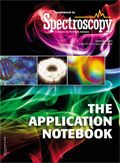Imaging of Graphene with Confocal Raman and Atomic Force Microscopy
The characterization of graphene with combined Raman-AFM imaging provides a nondestructive method to extensively investigate its properties.
The characterization of graphene with combined Raman-AFM imaging provides a nondestructive method to extensively investigate its properties.
Graphene consists of carbon atoms which form angstrom-thick two dimensional sheets. These sheets occur as multilayers in graphene flakes. The characterization of graphene requires nondestructive measuring tools like combined Raman-AFM imaging to determine its properties. While AFM can provide information about the physical dimensions of nano-materials, Raman imaging gives insights into the molecular composition of a material. Using the combination of confocal Raman microscopy with AFM, the high spatial and topographical resolution obtained with an AFM can be directly linked to the molecular information provided by confocal Raman spectroscopy.
AFM Imaging of Multilayered Graphene
The graphene flake was deposited on the oxide top layer of a Si-wafer by exfoliation. The AFM topography image reveals the 3D-physical dimensions of the graphene flake (Figure 1a). The black line in Figure 1a indicates the cross section of a height profile. This height profile shows the topography variation over a bi-, mono-, and no-graphene layer. The height difference between the Si-substrate and the first grapheme layer is 1 ± 0.1 nm, whereas the double layer of graphene is 1.36 ± 0.1 nm (Figure 1b).

Figure 1: (a) AFM topography image (AC-mode) of graphene, (b) Height profile along the cross section indicated in Figure 1a (black line).
Chirality Investigations of Graphene with Confocal Raman Microscopy
The Raman image (Figure 2a) was evaluated from a 2D spectral array, consisting of 150 × 150 Raman spectra (22,500 spectra in total). The integration time for each Raman spectrum was 0.05 s per spectrum, leading to a total acquisition time of less than 20 min.

Figure 2: (a) Color coded Raman image and comparison of edge chirality (zigzag or armchair) with the angles of the different graphene layers. (b) Raman spectra measured at different positions of the graphene flake (colors correspond to Figure 2a). For detailed information please refer to (1).
The characteristic Raman spectra for a mono-, bi-, and multilayer of graphene are presented in Figure 2b and show the unique D, G, and G' Raman bands of carbon nano-materials. The colors of the spectra match the colors in the Raman image. Different layers of a graphene flake can appear in different chiralities (zigzag or armchair). Thereby the chirality of graphene correlates with the angles between the edges of the graphene flake (1). By analyzing the differences in the intensity of the D-band, Raman spectroscopy is a fast and nondestructive method to determine the chirality of edges and the crystal orientation in graphene (Figure 2a).

These findings highlight the potential of confocal Raman-AFM imaging in the design and characterization of new optoelectronic devices, based on the unique magnetic, optical, and superconductive properties of graphene edges.
Reference
(1) Y. You, Z. Ni, T. Yu, and Z. Shen, Appl. Phys. Lett. 93, 163112 (2008).
Acknowledgment
Samples: Courtesy of N. Manyala, David Dodoo Arhin, Fabiane Mopeli, University of Pretoria, South Africa.
WITec GmbH
Lise-Meitner-Str. 6, 89081 Ulm, Germany
tel. +49 (0) 731 140 700, fax +49 (0)731 140 70 200
E-mail: info@witec.de, Website: www.witec.de
